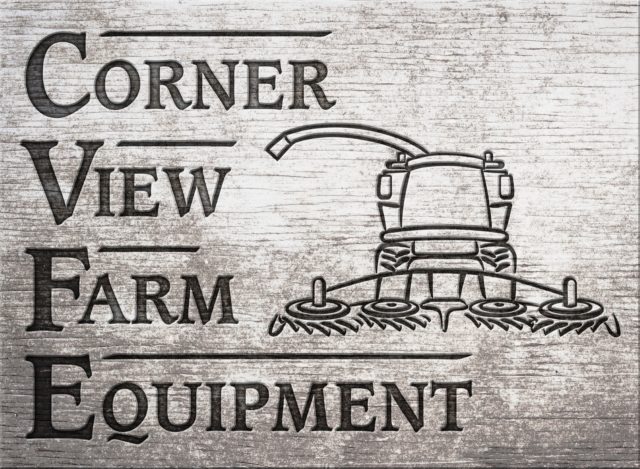Seth Hoyt
The Hoyt Report
California
I believe prices on the first alfalfa hay crop in the West in 2012 will be the strongest market of the season. Supplies of higher-quality alfalfa hay for milk cows will be very tight coming into the 2012 new-crop alfalfa season.
Alfalfa hay prices on second and following cuttings in the West will decline, not drastically, and I believe growers’ average prices on alfalfa hay for the 2012 season will be down at least $30 per ton and could be as much as $50 per ton lower if alfalfa acres and production are higher than expected and milk prices are lower than expectations.
–Excerpts from 2011 Western Alfalfa & Forage Conference Proceedings
Dennis Hancock
Forage Extension Specialist
University of Georgia
It’s hard to be optimistic in a dust storm, but I see better days ahead. Many farms and ranches continue to deal with extreme drought.
Long-range weather forecasts aren’t encouraging, either. Still, forage-based livestock producers in the Southeast should be optimistic about the medium- and long-term.
Nationally, December hay stocks were at the lowest level in over 20 years and hay acreage dropped over 11 percent in 2011 to the lowest level in recorded history. Over the long-term, I don’t see those acres going back into hay production.
They have gone to other crops or alternative enterprises. This could be a game-changing opportunity for forage producers in the Southeast.
The opportunity lies in playing to our strengths. Our competitive advantage in the Southeast is our ability to graze high-quality forages in the winter months. Re-focusing our production systems to play to this advantage could lead to a revolution in the industry.
Keith Johnson
Professor of Agronomy
Purdue University
If the last half of winter plays out like the first half with above-average temperature, hay stocks remaining should be above average.
Moisture received in the late fall and winter has recharged the soil profile and there should be ample moisture for spring forage growth.
Producers are encouraged to get new seedings made in the early spring when soil conditions permit field work.
High fertilizer cost should pressure forage producers to soil test and apply recommended rates where nutrients are needed.
Potato leafhopper continues to be the major alfalfa insect pest and growers are encouraged to consider selecting adapted potato leafhopper- resistant varieties.
There is increasing interest in cover crops as part of the grain crop production system. Many of the adapted cover crops have potential to be forage resources for livestock, too.
Tom Keene
Hay Marketing & Production
University of Kentucky
The year 2012 will once again present many challenges and opportunities for Kentucky forage producers.
As we start the new year, hay inventories will be short from the 2011 hay crop, but a mild winter has reduced the amount of stored feed farmers have had to utilize this winter.
Hay supplies should get us through until late March when pastures should start to recover and grow nicely. Hay production for 2012 will probably remain at current levels or dip slightly.
Hay prices should remain steady to strong as hay acres again compete with these higher-priced commodity crops.
Pasture acres will be in high demand in 2012 as cattle prices remain very strong. It will also be interesting in 2012 to see if any more acres will be devoted to bioenergy crops such as switchgrass.
Yoana Newman
Extension Forage Specialist
University of Florida
Forage and hay production in Florida is feeling the effects of an increasing dry situation coupled with extreme temperature oscillations characterized mostly by warm winter temperatures interrupted by extreme cold spells, neither of which are the ideal growing conditions for Florida cool-season forages.
The temperature and water stress has been too high on our winter forages. Current forage growth and production is behind.
Overall, in the state, forage and hay production could be placed at or below 50 percent of normal production. The stored forage supply is critical and is going to be serious in the short term.
The majority of temperate forage hay such as orchardgrass, timothy, alfalfa, etc. used during this time of year comes from out of state and the majority of that hay supply shipping from adjacent states has gone to aid the Western states that were in a worst drought situation.
Considering current weather conditions in Florida, challenges are expected for hay supply through the spring.
Monte Rouguette
Research Forage Scientist
Texas A&M University
Our area is experiencing a hay shortage to start the year. Barns are empty and producers will need to fertilize meadows.
Herbicides will be needed to control high weed pressure on pastures due to drought and overstocking.
Fall/winter rains have resulted in good growth of winter pastures (small grains, ryegrass, clover), which will be available for grazing in January through May.
Some producers will not return to the cattle business because of the high cost of replacements, but will instead opt to lease property for grazing or hay production.
Marvin Hall
Extension Forage Specialist
Penn State University
Hay prices continue to climb as the full impact of three factors begin to take hold: fewer hay acres in 2011 because they were rotated to corn, last summer’s drought in the Southeast and poor hay-growing weather throughout much of the Northeast.
Add to the hay shortage the devastating impact that late August flooding, caused by hurricane Irene, had on corn silage.
High water over thousands of acres either flattened the corn or left it coated with organic matter which made it unusable.
So for many farms, the option of switching the dairy ration to include more corn silage and less hay isn’t an option.
The old law of “supply and demand” has taken hold of the hay market and is pushing hay prices to previously unseen levels. Hay prices at Pennsylvania auctions have already surpassed a 50 percent higher price, with early January prices ranging from $250 to $450 per ton.
John JenningsExtension Forage Specialist
University of Arkansas
The drought of 2011 drastically reduced the hay crop and pasture production. Hay supplies are very tight, and overall quality is lower than normal.
Many herds were thinned or sold, especially in southwest Arkansas. The southwest section of Arkansas was hardest hit by drought and some stand loss may be expected in some areas.
In central Arkansas, producers that followed recommendations from the Arkansas 300-Day Grazing Program did produce good stockpiled bermudagrass and stockpiled fescue pastures for fall grazing.
Those that did not put those practices in place have been feeding hay since late summer. Rainfall and forage production was good over northeast Arkansas and forage growth should be normal in spring.
The mild winter is making the limited grazing and hay supplies stretch farther than expected. Many fescue fields did recover through November when fall rains returned and should be productive in spring.
Dan Undersander
Extension Forage Specialist
University of Wisconsin
The 2011 Crop Production summary showed some decline in forage acres and production of the Midwest and Northeast.
Alfalfa acreage generally declined slightly more than total forage acreage. Yields were about the same both for total forage and alfalfa, being about 3.13 tons per acre for hay and 7.38 tons per acre for haylage/greenchop. Thus total forage production was down about 4.5 percent for the region.
Wisconsin seeded similar alfalfa acres to the previous year. A survey of producers and consultants indicated that they thought seeding in Wisconsin was held back by poor conditions during normal seeding period in 2011 and that seeded acreage would increase in 2012.
Rocky Lemus
Extension Forage Specialist
Mississippi State University
Forage producers in Mississippi experienced a dry fall. Rain patterns below normal and warmer temperatures delayed planting and establishment of annual ryegrass.
This pattern has forced livestock producers to feed hay later into the winter. Expected amount of precipitation for the spring and summer remain optimistic, and summer pasture and hay production will remain normal.
2012 hay prices are expected to range from $60 to $90 per ton. Because of the Texas and Oklahoma drought, we have seen an increase on Mississippi producers buying more cattle from these affected areas. This means that more land might need to be dedicated to pastures. FG









